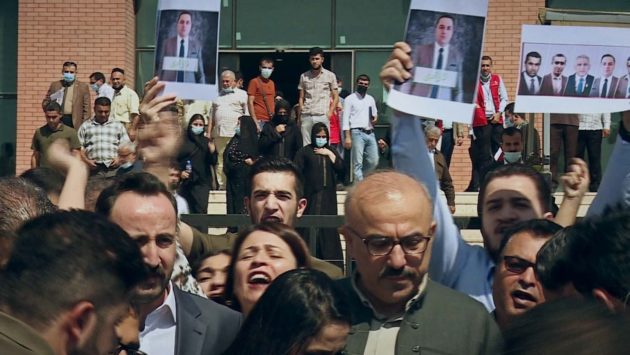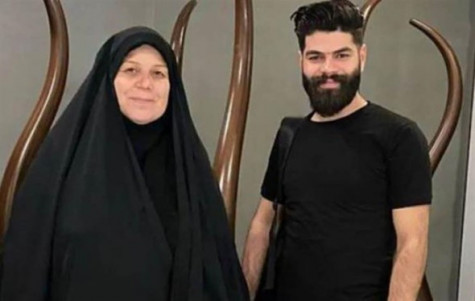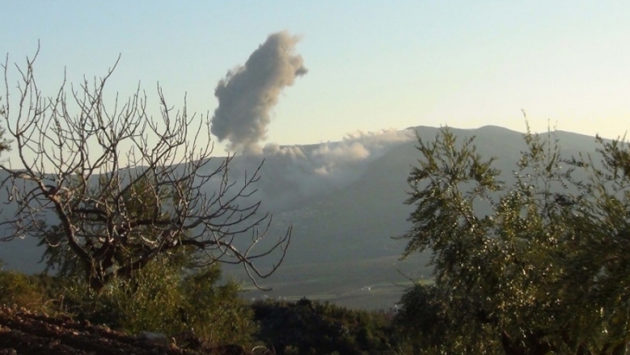The Youth Movements and the Last Elections in Iraq: From the Square of Nasiriyah to the Iraqi Parliament
“We are entering the Green Zone and crossing the Al-Jumhuriya bridge, in memory of the martyrs of the October 2019 uprisings”. Saying these words, the new Iraqi movement IMTIDAD celebrated the extraordinary winning of 9 seats at the early elections.
The elections, held on October 10th, inaugurated a new political phase of the country as new political movements emerged and challenged traditional parties in power since 2003. Indeed, the independent candidates, coming from the milieu of the Iraqi civil society and the protest movements, won 40 parliamentary seats out of 329: 9 went to the movement “New Generation” (Sulaymaniyah), 6 to “Ishraqat Kanon” and 9 to IMTIDAD. Even though the numbers don’t seem striking, their winning and the fact that new members of the parliament constitute 70% of the total are signs of remarkable change in the Iraqi political scene.
To understand this political and social turn and to identify the roots of these new political movements, one should look back at the popular non-violent protest that started in 2011. The popular unrest kept emerging until culminating in the October 2019 uprisings. On this occasion, the young Iraqis loudly asked about the end of corruption and of the political system based on sectarian quotas, established after 2003. The uprisings spread throughout the whole country gaining national consensus and support especially from women, students, and social movements. The political pressure exerted by the protests forced the government of Adil Abduh-Mahdi to resign and the parliament to modify the electoral law and to call for early elections.
On the one hand, the protest movement never stopped, neither when facing severe repression, threats, kidnappings, and the death of about 650 activists and protests: only the pandemic slowed it down. On the other hand, it should be noted that the parties (Al-Fatah and Wa’i) representing the Iranian-backed militias and leading the repression of the October uprisings were the main losers of these elections. This result shows how much power – gained for their fight against Daesh – they have lost and how their influence is jeopardized also in their traditional strongholds in the southern areas of the country: this is mainly due to their hostility towards the protest movement and their corruption.
In April 2019 in the city of Nasiriya, social movements and civil society organizations held a national meeting, the first of its kind, in which they shared experiences and projects. I was there, witnessing one of the most successful meetings between the representatives of the Iraqi social movements and the civil society.
The meeting considered the future of the protests, fundamental freedoms, the environmental issue, women’s rights, the protection of the cultural heritage, and of economic and social rights. The organizing committee comprising the young people of Nasiriya stood out for its great enthusiasm and determination to create a better reality for their own city and their country. Some of them took part in the past in the activities of the I Love Dhi Qar Festival, the most important civic event organized in 2017 by the social movements; others attended actively the Iraqi Social Forum and the Iraqi Civil Society Social Initiative (ICSSI). These people were the same who organized the Thawra Tishreen and the protests in Al-Haboubi square in Nasiriya. Their ideas are the leaven of social change in Iraq, their activities prove that there is an Iraqi society alive and willing to build a new future for its country and its people.
The Iraqi society as a whole and its social and civic movements are facing very dangerous and difficult conditions both because of the complex internal situation in the country and of the fierce regional conflict between Iran and the US. As the assassination of the Iranian general Qassim Soleimani showed, Iraq is also one of the battlegrounds between the two powers. As for the city of Nasiriya, it has to address further issues since it is abandoned by institutions and characterized by rampant corruption. Moreover, its young activists face a conservative environment dominated by clans and family relationships. Nonetheless, they didn’t step back, but they joined the October protests and paid a high price: in fact, Nasiriya is the second city in the country for a number of protesters killed after Baghdad. After the killings, the social rage exploded, people stormed the political parties’ headquarters and declared the city “closed” to activities and militias of the political parties.
Despite the high international and national concerns on October 10th, 2021, the early elections, the fifth in Iraq since 2003, were held without serious violations happening. However, this positive outcome was counterbalanced by restrictions of political and civil rights on the independent candidates and by the lowest turnout registered since 2005 elections.
The reluctance of Iraqi people to cast their vote is related to the lack of trust in the political system, characterized by violence and based on a sectarian division of the country into three sects – Sunni, Shia, and kurds -. The political forces rule by creating alliances that promote their personal interests rather than the ones of the country. These traditional forces still control extensive resources on the ground, whereas their corresponding militia aims to be integrated into the state apparatus. In this regard, the Popular Mobilization Forces are particularly pushing for this integration: the armed force, created by the Shia authority of Najaf to fight Daesh, even after the liberation keeps existing, maintaining pockets of power. Due to the above-mentioned conditions, many people decided to boycott the elections and not to vote: the boycotting forces were both new and old political forces, such as the Iraqi Communist Party. Nonetheless, this decision may have fostered confusion among the population and reduced the room for alternative scenarios.
Even though the political boycotting was extensive, the political forces linked to the new social movements led to victory for young people and women as the results of IMTIDAD (“Expansion”) show. The movement was born in the south of Iraq, in Al-Haboubi square of Nasiriya in the early stages of the October uprisings. The old and flourishing city of Nasiriya, though now abandoned and marginalized by the authorities, keep generating political and cultural people significant for the country.
The march now goes on. After the announcement of the preliminary results, the losing parties disavowed the elections and organized a sit-in threatening to overthrow the current government if the results are not canceled, or the votes hand-counted. These forces want to put pressure on the winning parties to reaffirm the sectarian system and gain a share of power. According to this consideration, I believe that possible scenarios are two. In the first one, the Sadrist movement allied with Tagadum and the Kurdistan Democratic Party (KDP) forms a majority government. Since the other forces will constitute the opposition, this situation could help end the consociate corruption of the political forces and open a new era based on the political majority – complying with the requests of the October revolution. In the second scenario, the traditional forces reach a consensus to form a new government based on sectarian quotas: Iran and the Iranian-backed militias are particularly pushing for this outcome.
In both cases, the new movements face a difficult task as they should create an alliance representing the requests of the October uprisings. Even though it is unlikely that these forces become part of the government, the alliance could help create and consolidate new policies, representative of the requests of the youth movement. Now, it is time for to the social and civic movements to coordinate and communicate with the different Tishreen forces, both inside and outside the Parliament, to support the momentum for political reforms and to endure on the path of change. No matter the directions IMTIDAD and the new political movements would take in the future, the commitment of the young people of Nasiriya represents an example of civil resistance and adherence to change that tries to resist at all costs in an extremely difficult context.
Ismaeel Dawood




